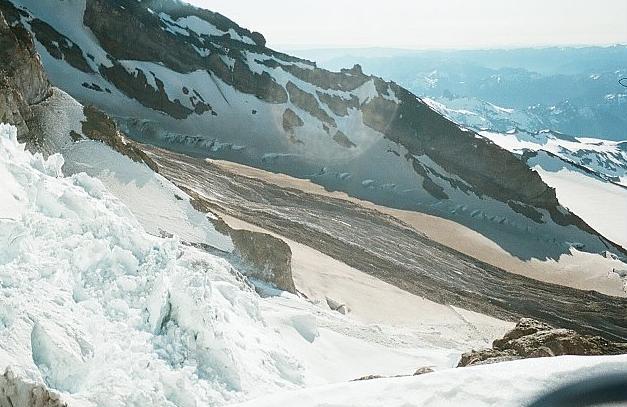June 30, 2011
We’ve been closely observing the rock/ice fall coming  down the Nisqually Glacier the past week. The word from the experts is that it is not volcanic or seismic in origin. The probable cause is the natural erosion of the volcano, at a spot that has weakened significantly in the exposed layers of volcanic strata high up on the Nisqually Cleaver (Ridge). Rock fall from the steep exposed part of the ridge occurred at least three times, and entrained large amounts of snow and ice with it as it fell.
So far, the furthest extent of the flow of this material down the glacier is to  an elevation of approximately 7600 feet. Below that the glacier flattens out significantly. Our groups are taking a conservative crossing point on the lower glacier right now, at about 6,000 feet in elevation and approximately one mile in distance from the lowest activity. We will continue to observe activity on the glacier and have an alternate route available if necessary to avoid the Nisqually Glacier completely.
The Nisqually Glacier is a contained drainage and all activity is confined to this area. It does not affect our ascent of the Muir Snowfield to Camp Muir or the Kautz Route or Fuhrer Finger Route once we have gained the other side of the lower Nisqually Glacier.
George Dunn

